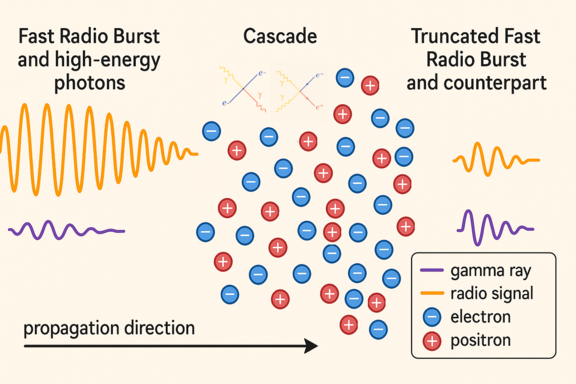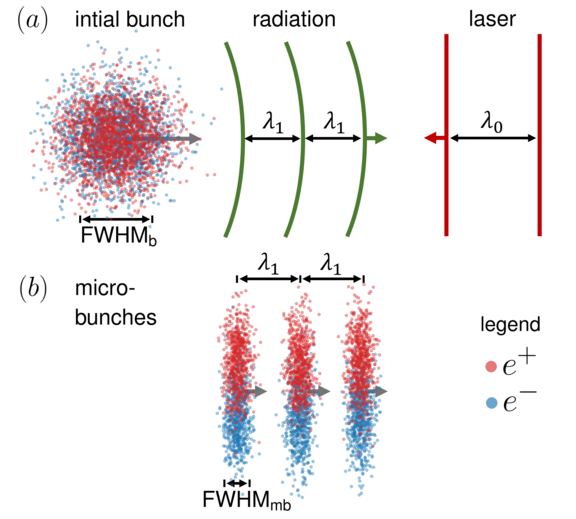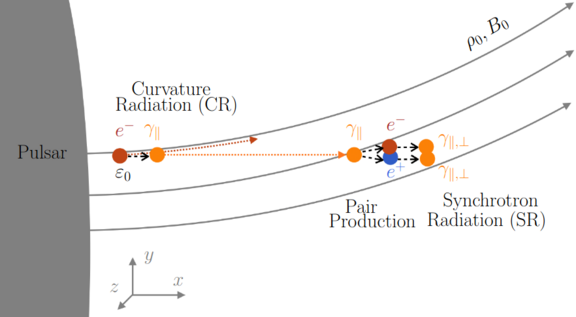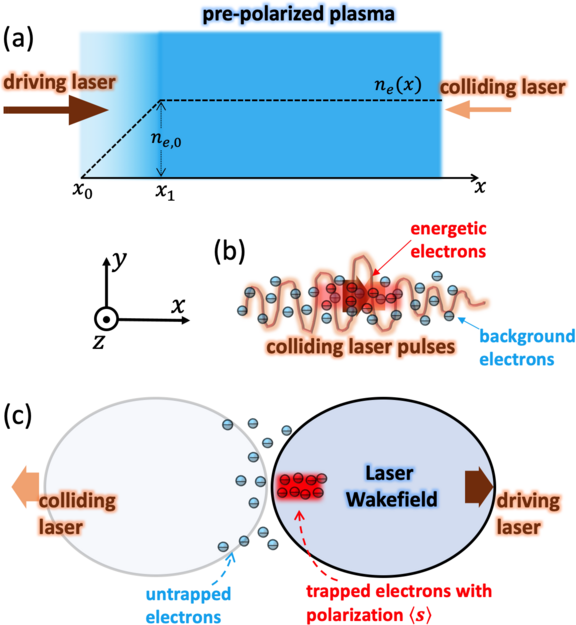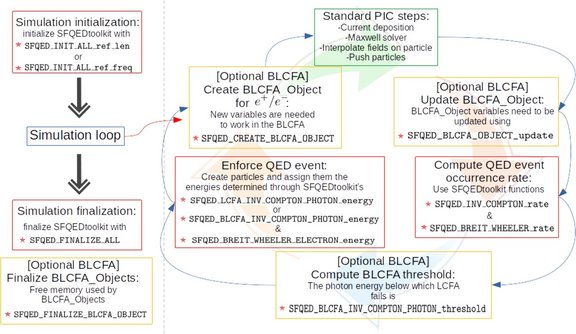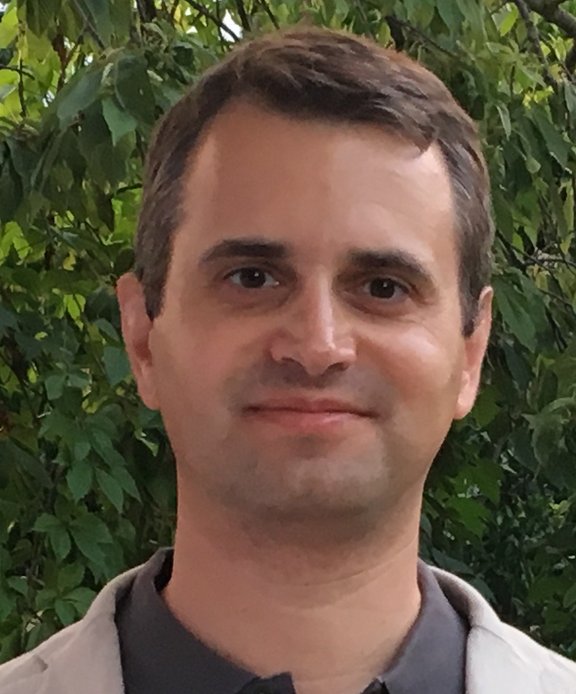Extreme Field Quantum Plasma Dynamics and Relativistic Laboratory Astrophysics
Relativistic quantum plasmas, such as gamma-electron-positron plasmas, are considered to play a key role in extreme astrophysical environments, including pulsar magnetospheres, magnetars, black holes, and blazars. For example, they are central to explaining energetic phenomena associated with gamma-ray bursts. Due to the complete symmetry between matter and antimatter particles, electron-positron plasmas represent a unique state that is qualitatively different from ordinary electron-ion plasmas. This implies that the collective response and the related instabilities of relativistic electron-positron plasmas result in peculiar dynamics, the understanding of which is still speculative.
Recent advances in high-power laser and in high-current electron beam technology enable the generation in the laboratory of ultra-strong electromagnetic fields that can trigger strong-field QED processes such as photon emission and high-energy photon conversion into an electron-positron pair. This paves the way to generate and probe in the laboratory gamma-electron-positron plasmas similar to those of astrophysical environments, and justifies the flourishing interest in this area of research known as relativistic laboratory astrophysics.
Our research focuses on investigating the interplay between strong-field QED processes and collective plasma dynamics in the presence of extreme electromagnetic fields. Prominent examples include radiation reaction effects in plasmas, where the recoil due to photon emissions drastically alters the emitting particle’s dynamics, the generation of coherent radiation, as well as intense collimated gamma rays and dense high-energy spin-polarized particle beams in laser-plasma and beam-plasma interactions. Due to the complex interplay between strong-field QED and nonlinear plasma dynamics, large-scale simulations are an essential tool. The development of advanced models of strong-field QED processes, improved numerical methods, and their implementation into codes capable of accurately and efficiently simulating strong-field QED-dominated plasmas in modern high-performance computing systems also represents one of our key activities.
People
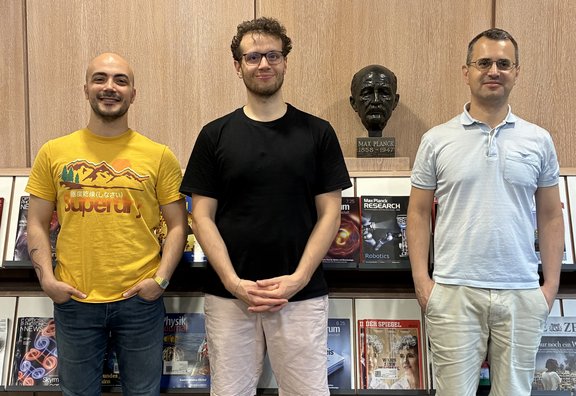
- Matteo Tamburini (Group Leader)
- Samuele Montefiori (Postdoc)
- Cagri Erciyes (Ph.D. student)
Completed thesis
| May 2025 | Congratulations to Samuele Montefiori for successfully defending his Ph.D. thesis on "Analytical and Numerical Methods for High-Precision Studies in Ultrarelativistic Strong-Field Quantum Electrodynamics". |
| Oct. 2023 | Congratulations to Michael J. Quin for successfully defending his Ph.D. thesis on "Classical Radiation Reaction and Collective Behaviour". |
| Apr. 2021 | Congratulations to Bastian Brunner for successfully defending his Bachelor thesis on "Electron Dynamics Controlled via Radiation Reaction". |
| Feb. 2021 | Congratulations to Maitreyi Sangal for successfully defending her Ph.D. thesis on "The interaction of Light with Matter and Light with Light". |
| Nov. 2020 | Congratulations to Archana Sampath for successfully defending her Ph.D. thesis on "Strong-field QED and collisional effects in electron beam-plasma interaction". |
| Oct. 2020 | Congratulations to Michael J. Quin for successfully defending his Master thesis (fast track) on "Coherence Effects and Spin Polarisation of Electrons in Electromagnetic Fields". |
Counterpart-Induced Millisecond-Scale Truncation Mechanism of Fast Radio Bursts
Fast radio bursts (FRBs) are powerful millisecond-duration (~10-3 s) flashes of radio waves that remain one of the most enigmatic astrophysical phenomena. Traditionally, their short durations have been interpreted as constraints on the physical size of their sources, pointing to compact objects such as magnetars. This interpretation was reinforced by the detection of FRB 200428, which originated from the Galactic magnetar SGR J1935+2154 and was accompanied by a coincident soft gamma-ray counterpart. However, recent detections of FRBs of microsecond-scale (~10-6 s) duration challenge the assumption that observed durations necessarily reflect intrinsic emission timescales. In our work we demonstrate that high-energy photons associated with the gamma-ray counterpart can initiate electron-positron pair cascades via Compton scattering and the Breit-Wheeler process as they propagate through the ambient plasma [1]. This cascade rapidly increases the plasma density, leading to the truncation of the FRB signal and imposing a millisecond-scale upper limit on its observable duration. This mechanism, inferred from FRB 200428, may be universal, suggesting that the observed brevity of FRBs is not intrinsic but rather a result of interaction with their local environments.
[1] Y. He, C. H. Keitel, and M. Tamburini, arXiv:2505.14413 (2025)
Attosecond-scale coherent XUV light from e−/e+ microbunching in an intense laser pulse
Attosecond pulses of coherent extreme ultraviolet (XUV) light are essential tools for probing electron dynamics on their natural timescales, enabling investigations of ultrafast phenomena in atomic, molecular, and condensed matter systems. While high-harmonic generation has traditionally served as the primary mechanism for producing such pulses, its limited efficiency at high photon energies has led to the development of free-electron lasers (FELs), which provide higher intensity but require large-scale infrastructure. Optical free-electron lasers (OFELs), which use a laser pulse instead of an undulator, offer a path toward drastically more compact sources but are hindered by the Coulomb repulsion and emittance of dense low-energy electron beams. Our work addresses this challenge by demonstrating, through numerical simulations, that relativistic electron-positron (e-/e+) beams interacting with an intense laser pulse can generate coherent broadband XUV radiation in the form of 8-attosecond pulses spaced by 92 attoseconds [1]. The quasi-neutrality of the e-/e+ beam suppresses Coulomb expansion, preserving beam quality and enabling microbunching over sub-millimeter scales. This result represents a major step toward the realization of compact, high-brightness attosecond light sources with broad applicability in ultrafast spectroscopy, structural imaging, and fundamental science, where access to coherent XUV radiation in a compact format is highly desirable.
[1] M. J. Quin, A. Di Piazza, Ç. Erciyes, C. H. Keitel, and M. Tamburini, Commun. Phys. 8, 282 (2025)
Polarized QED cascades over pulsar polar caps
QED cascades over pulsar polar caps play a crucial role in generating the dense electron/positron (e±) plasmas that sustain pulsar magnetospheres, enabling the screening of strong parallel electric field. These cascades are initiated by curvature radiation (CR) from primary particles accelerated along magnetic field lines, followed by synchrotron radiation (SR) from secondary pairs, leading to a self-sustaining sequence of photon emission and pair production. While prior models have successfully captured the global dynamics of such cascades, they typically neglected spin and polarization effects intrinsic to strong-field QED. This study addresses this gap by employing both 3D single-particle and 1D QED-PIC simulations that explicitly resolve e± spin and γ-photon polarization [1]. The results reveal that CR photons are highly linearly polarized in the plane of the magnetic field, whereas SR photons are only weakly polarized. As the cascade progresses and SR photons dominate, the overall photon polarization decreases. Additionally, the study finds that the polarization of CR photons enhances pair production rates by approximately 5%, in contrast to the suppression effect predicted in laser-plasma contexts. These findings provide a deeper understanding of the microphysical processes governing cascade efficiency and structure in pulsar environments.
[1] H.-H. Song, M. Tamburini, Mon. Not. R. Astron. Soc. 530, 2087 (2024)
Spin-polarized electron beam generation from colliding laser pulses
The generation of spin-polarized electron beams is of growing interest for applications in high-energy physics, precision measurements, and next-generation accelerator technologies. While conventional methods such as spin-dependent QED processes and ionization of heavy atoms have enabled partial control over beam polarization, they often require extreme laser intensities or suffer from limited charge, polarization, or tunability. Recently, schemes utilizing pre-polarized plasmas—produced via laser-induced molecular photodissociation—have demonstrated the feasibility of generating highly spin-polarized beams using laser-wakefield acceleration. Nevertheless, these approaches typically rely on single-pulse injection mechanisms, offering limited control over beam quality and stability. In this context, the colliding-pulse injection (CPI) scheme emerges as a promising and versatile alternative. In our work, we developed a comprehensive theoretical and computational framework for spin-polarized electron beam generation within the CPI paradigm [1]. Using test particle simulations, Hamiltonian analysis, and multidimensional particle-in-cell simulations, we demonstrated that CPI facilitates the production of quasi-monoenergetic electron beams with over 80% spin polarization and tens of picocoulombs of charge using commercially available 10-TW-class laser systems. Crucially, CPI offers multiple degrees of freedom to control beam properties such as energy, charge, and polarization, rendering it a robust and scalable method for generating high-quality spin-polarized electron beams suitable for high-repetition-rate operation.
SFQEDtoolkit: A high-performance library for the accurate modeling of strong-field QED processes in PIC and Monte Carlo codes
The accurate modeling of strong-field quantum electrodynamics (SFQED) processes is essential for simulating particle and plasma dynamics in extreme electromagnetic fields, such as in the context of high-intensity laser-matter interaction and astrophysical environments. State-of-the-art simulation codes typically rely on precomputed lookup tables to evaluate the complex probability rates and distributions characterizing SFQED processes. However, this method is hindered by significant limitations, including numerical artifacts, limited spectral resolution, and high computational cost associated with fine-grained sampling. The SFQEDtoolkit library addresses these challenges through a novel, high-performance function approximation strategy combining Chebyshev polynomial expansions, asymptotic analysis, and variable transformations [1]. This enables fast and highly accurate evaluation of SFQED rates and spectra. SFQEDtoolkit is a publicly available, easily integrable, and efficient library that significantly improves both the performance and fidelity of SFQED processes in simulation codes. Benchmarks confirm that SFQEDtoolkit not only surpasses standard table-based methods in accuracy but also achieves superior computational efficiency.
[1] S. Montefiori, and M. Tamburini, Computer Physics Communications 292, 108855 (2023)
